Strong, healthy tomato seedlings with a strong stem and developed greens are one of the main conditions for obtaining a rich harvest. Weak seedlings that did not receive enough nutrition, were infected with various diseases, or simply did not have time to grow up, will not be able to take root even under relatively favorable conditions, so they are not planted.
But sometimes gardeners, even following all the rules of agricultural technology, get weak, thin and very elongated seedlings of tomatoes. It is most often possible to correct the situation, but it is useful to know some measures of the simplest prevention.
Content
Signs and Causes
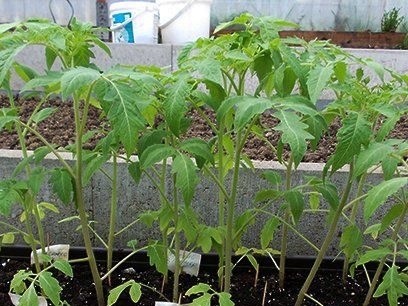 To understand that seedlings are not viable and have pathological parameters is simple. A sign of healthy seedlings will be a bright color evenly on all leaves. The greens should be elastic, dull, not wrinkled. For beginning gardeners and gardeners it is not easy to determine the degree of development of the sprout, its length, especially when it comes to different varieties. The normal parameters for landing are:
To understand that seedlings are not viable and have pathological parameters is simple. A sign of healthy seedlings will be a bright color evenly on all leaves. The greens should be elastic, dull, not wrinkled. For beginning gardeners and gardeners it is not easy to determine the degree of development of the sprout, its length, especially when it comes to different varieties. The normal parameters for landing are:
- height not less than 25 and not more than 45 centimeters;
- stem thickness not less than 8 millimeters;
- the number of developed leaflets is at least 6 pieces.
For undersized tomatoes, a lower height limit is acceptable; for cherry varieties and tall bushes, the largest of these figures. However, anything above or below these values should be rejected. Notice that seedlings outgrow, it is possible much earlier, even at the stage of forming the first sheets. The leg is considered too thin and long if it is unstable, bent or bent. This means that the stem is not able to hold even the very first tiny leaves, develops incorrectly and in the future will not be able to give the plant the necessary nutrition.
There are many reasons for this overgrowing and it is often difficult to single out one. First of all, this is a failure to comply with the timing and technology of landing. For tomatoes of almost all types and varieties, the appropriate sowing period is the end of March, but not earlier than 20 numbers. Otherwise, thinning is very likely due to lack of sunlight and the shortness of the day. The same thing happens with seedlings if they stand in a shaded place. The green literally reaches for the sun, and the stem does not keep up with its growth. Another common problem is the lack of moisture in the air. Therefore, the shoots are kept under the film for some time, and then regularly moisturized. The lack of water in the environment leads to the weakening of any overhead shoots. Among the common causes of stretching seedlings note:
- excess fertilization for growth;
- lack of fertilizers to form greens;
- excessive watering;
- landing too often.
Fertilizers must be applied strictly according to the schedule, no need to overfeed the tomatoes in the hope of rapid growth. On the contrary, the stem will stretch, the leaves will become disproportionate, and the plant will not have time to strengthen. Too tight planting, in turn, leads to the fact that the roots do not have enough space for development, like the leaves, and the seedlings do not receive the necessary light, actually grows in shading.
How to deal with stretching
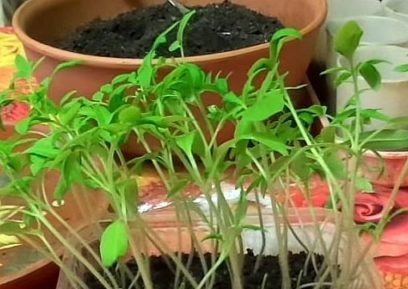 It is very important to notice in time that the seedlings have become too high and take action. It is not advisable to plant such plants, as this will not bring any result.On the contrary, in pots or crates such seedlings shade healthy and strong. Do not move into the soil and tomatoes with weak, light, pale leaves, without understanding the reasons. Such symptoms are rare, but they are still a sign of fungal, parasitic damage. Thus, you can infect all crops and even the land itself. The situation can be corrected both at the stage of growing young seedlings, and in the process, and even at the time of transfer to open ground.
It is very important to notice in time that the seedlings have become too high and take action. It is not advisable to plant such plants, as this will not bring any result.On the contrary, in pots or crates such seedlings shade healthy and strong. Do not move into the soil and tomatoes with weak, light, pale leaves, without understanding the reasons. Such symptoms are rare, but they are still a sign of fungal, parasitic damage. Thus, you can infect all crops and even the land itself. The situation can be corrected both at the stage of growing young seedlings, and in the process, and even at the time of transfer to open ground.
What to do with young seedlings
Sometimes shoots do not look good immediately after appearing from the earth. There are certain growth rates, tomato health indicators, so a gardener can simply compare. If deviations are already noticeable, immediate action should be taken. First of all, evaluate the conditions. Set the temperature to no more than plus 23 degrees, place the humidifier nearby, allow access to sunlight, move closer to sources of additional light, if any.
It is important to thin out tomato seedlings at this stage. You need to remove those instances that are noticeably behind in growth. You can try to root them in another pot, but this rarely gives results. Strong seedlings need to provide the maximum level of lighting, for example, install a special floristic lamp with a certain emission spectrum. In this case, as it grows, it is necessary to gradually change the irrigation mode and thermal content. Adult shoots need a little less water, as well as heat. For them, a mode of plus 20-21 degrees will be comfortable. Landing protection is necessary only from drafts.
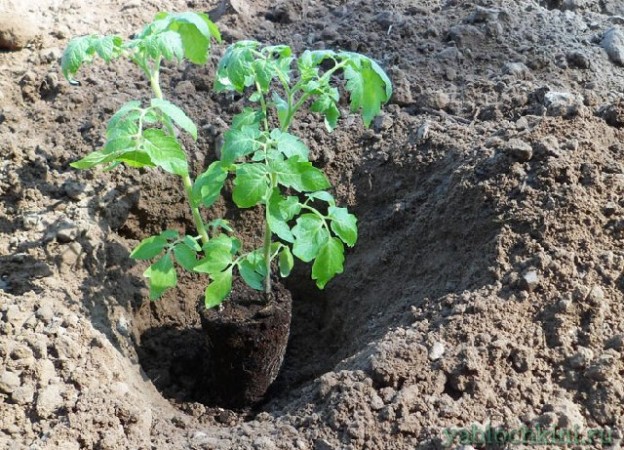 You may be interested in:
You may be interested in:The first feeding should be done after 10 days, then on the 20th day again. If the seedlings are stretched after the first stage, you need to carefully study the composition of the fertilizer. Perhaps there are nitrogen in several products. Its excess can cause a deviation in the development of the plant.
What to do during the growth phase
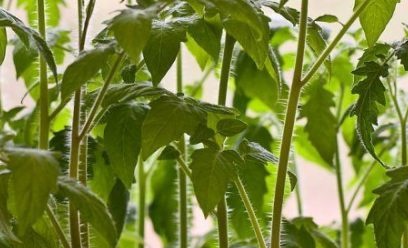 When the seedlings grow actively, but quickly stretch, without adding the diameter of the stem, it is necessary to adjust the irrigation plan, change the composition of fertilizing and mechanically limit growth. In this case, it is necessary to continue reducing the density of landings. The weakest shoots can be moved to new pots. This is especially convenient when the main part of the seedlings is extended, and you can not lose the number of bushes.
When the seedlings grow actively, but quickly stretch, without adding the diameter of the stem, it is necessary to adjust the irrigation plan, change the composition of fertilizing and mechanically limit growth. In this case, it is necessary to continue reducing the density of landings. The weakest shoots can be moved to new pots. This is especially convenient when the main part of the seedlings is extended, and you can not lose the number of bushes.
If the leaves are too large and the stem is thin but tall, you need to remove the crown. Gently pinch the top pair of leaves with the stem until it branches from below. This will provide an incentive for the development of the rest of the shoot, but limit growth in height. The rest can be placed in clean water until the first roots appear, and then planted in a separate container. Get two healthier plants.
If such measures did not help, or if the foliage of the plants is not sufficiently developed, pinching should not be done. You can limit the growth and slow down the drawing process by placing the tomatoes in a well-lit but cool place. Daylight hours for them should be at least 16 hours a day, but the temperature should be in the range from 13 to 16 degrees above zero.
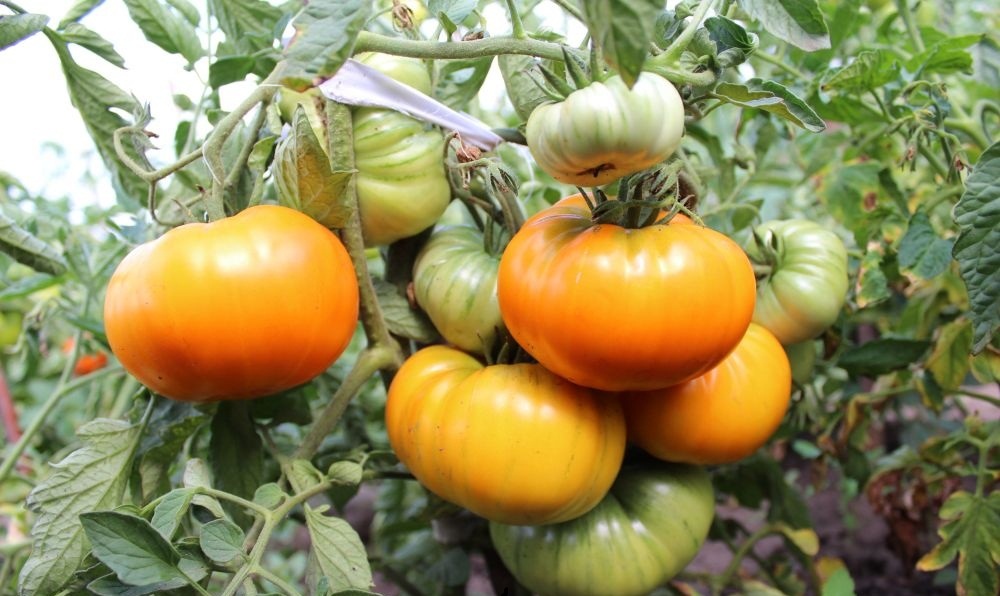 You may be interested in:
You may be interested in:Sometimes there is not enough space to plant all the young bushes, and you want to keep their number.In this case, the contact of the lower tiers of foliage should be avoided. Cut the largest lower leaves with sharp scissors to half the length so that the bushes do not touch each other at this level. The competition between them will disappear, the extension will slow down, and the stem will receive a little more sunlight and begin to develop faster.
What to do when planting
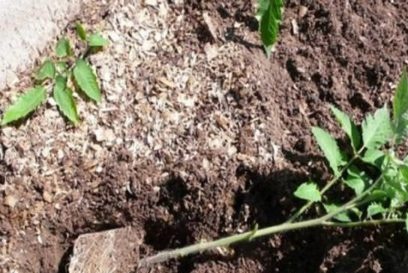 If the tomato seedlings stretched out literally in a couple of days and became too thin and high right before planting in the open ground, you can avoid the loss of bushes and achieve a good level of flower buds. To do this, you must follow the simple rules for disembarking such damaged items.
If the tomato seedlings stretched out literally in a couple of days and became too thin and high right before planting in the open ground, you can avoid the loss of bushes and achieve a good level of flower buds. To do this, you must follow the simple rules for disembarking such damaged items.
First of all, it is necessary to exclude watering before moving to the ground. The stems infused with the vaga are fragile and can break even under their own weight, not only from touch. Therefore, before transportation, watering is minimized in two days, and excluded altogether. Seedlings will fade slightly, but this is not dangerous, the greens will become soft and non-fragile.
The highest bushes can be deeply deepened: it is permissible to tear off the lower pair of leaves and ground the entire stem to the ground to this level. The bush will grow a little more and become normal in size, it will not require complex tying. After planting, such plants can be left in a lying position for some time, in which case it is more convenient to plant them in a trench. The culture itself is very tenacious and even after such numerous manipulations, most of the tomatoes will survive if the subsequent top dressing is carried out in time.
Pull Prevention
You need to start taking care of the seedlings' health even before planting the seeds, in this case you will not have to deal with stretching and discoloration of the leaves, too fragile stems and thin shoots. First of all, you need to choose a suitable soil. It should not be too dense, filled with nutrients and humus. Do not forget about proper drainage. Excess moisture also affects the development of a young bush.
The right choice of landing site is excellent prevention. To the window or source of artificial ultraviolet radiation should be no more than 50-60 centimeters. If bushes with different heights will be located on the same site, it is advisable to place the undersized ones at an angle or on an elevation so that they do not shade with higher grades.
You should adhere to a specific plant care schedule from the very beginning. Watering - no more than three times a week. If the humidity is low, there is no humidifier, the soil dries up, you can use a conventional household spray. The first top dressing - not earlier than a week after the appearance of the last shoots. The next - only after 10 days. Three top dressings will be enough to land in the ground.
Fighting seedlings is easy enough if you start doing this as early as possible. The correct choice of the place of germination, control of the temperature in the room and the level of illumination are the most important measures. It is important to pick, pinch and remove excess seedlings in time, as this will help to get the maximum of flower stalks after the transplant, as a result, a rich tomato harvest.

 Low-growing tomatoes, without pinching: 5 of the most delicious varieties
Low-growing tomatoes, without pinching: 5 of the most delicious varieties Why tomato seedlings grow poorly
Why tomato seedlings grow poorly We grow a tomato in a shell
We grow a tomato in a shell Growing tomatoes without watering according to the method of Kazarin
Growing tomatoes without watering according to the method of Kazarin